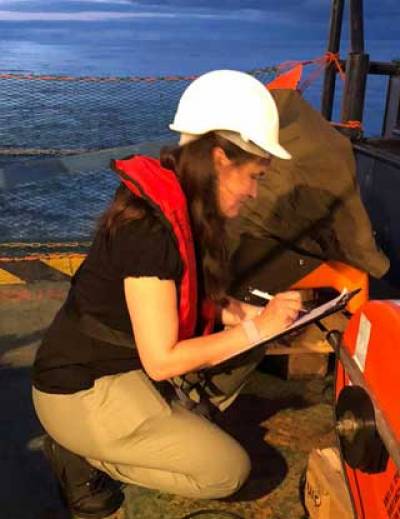Geosciences, geophysics, seismology, geodynamics, solid earth, earthquakes, mantle, anisotropy
Professor in Seismology

Appointment: | Room: |
|---|---|
| Professor | Kathleen Lonsdale, 342 |
Courses Taught: | |
| Seismology II (module organiser and lecturer) | |
| Field Geophysics ( module organiser and lecturer) | |
| Numerical methods (module contributor) | |
Research Group(s): | |
| Seismological Laboratory | |
Email Address: | Telephone Number: |
| a.ferreira@ucl.ac.uk | 020 3108 6367 (56367) |
Research Summary
I study deep Earth structure and earthquake source processes to obtain an integrated understanding of the processes controlling the dynamic behaviour of our planet from the surface down to the lowermost mantle. My research group develops and uses novel comprehensive methodologies for modelling seismic and, more recently, geodetic data.
- Seismic tomography
We have built new 3D global models of seismic anisotropy (the variation of wavespeed with direction, a potential proxy for strain and flow) in the mantle, showing that deep Earth imaging can be strongly affected by assumptions about the crust (Ferreira et al. 2010). Our recent whole-mantle anisotropy model SGLOBE-rani (Chang et al., 2015) uses a massive, multiple dataset and highlights exciting features, such as a deep interaction between the Tonga-Kermadec slabs and the Samoa plume (Chang et al., 2016).
We study earthquake sources using a wide range of data, notably seismic surface waves (e.g., Ferreira et al. 2011), low-frequency normal modes (Lentas et al. 2013) and geodetic (InSAR) data (e.g., Weston et al. 2012, Weston et al., 2014). We recently compiled the first archive of source models based on InSAR data, the ICMT database (Weston et al. 2011; Ferreira et al. 2011).
- Forward modelling and multidisciplinary data
We use purely numerical and asymptotic techniques to simulate seismic wave propagation in realistic media, such as the full ray theory approach that we implemented to simulate surface waves in the 3D Earth (Ferreira & Woodhouse 2007; Parisi et al., 2015; Parisi & Ferreira, 2016; Parisi et al., 2018). We model not only seismic data, but also other data types such as tilt (Ferreira et al. 2006) and rotational signals (e.g. Ferreira & Igel 2009).
Recent Highlights:
- Tonga eruption: Atlantic seafloor felt Pacific volcano megablast. BBC News: Science & Environment Jan 2023
- Tonga volcano eruption felt in Atlantic Ocean seafloor on other side of world - BBC News Jan 2023
- UPFLOW Marine Seismology Campaign 2021; YouTube: Part I & Part II
- Dr Ana Ferreira has secured prestigious EU funding. 2020.
 Close
Close

